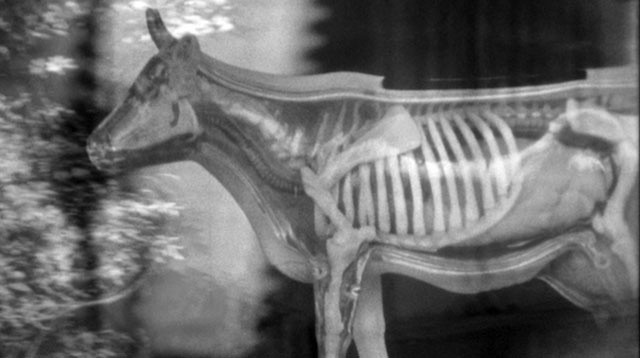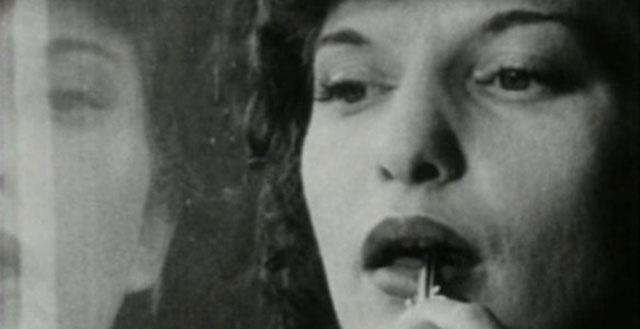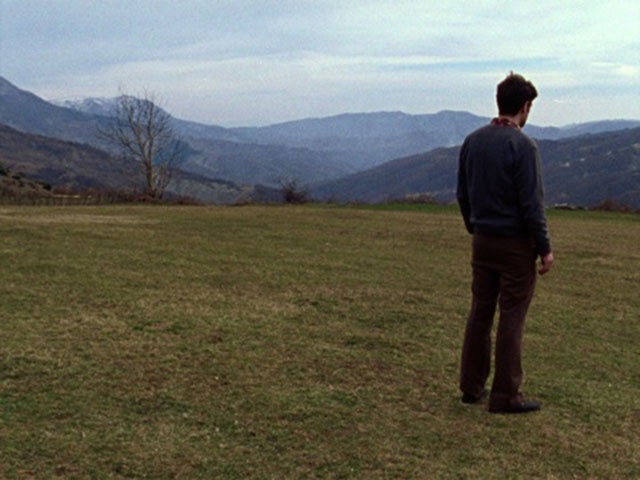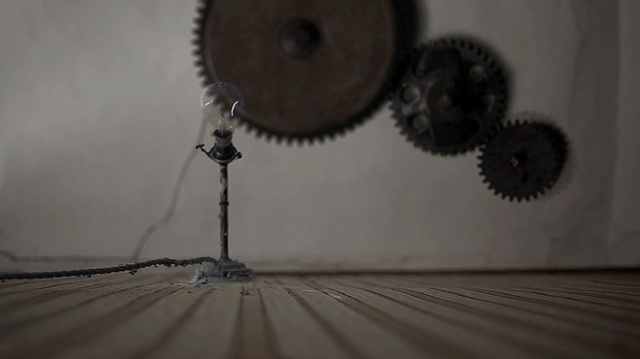Publications
The Jerusalem Show
Chapter 5: Lines
CHAPTER 5
LINES
Programme
Saturday, 25 October 2014: The Jerusalem Show film screening program presentation by curators Yazid Anani, Anne Barlow, Branko Franceschi, and Basak Senova, 18:30 to 20:00, African Community Youth Centre.
Saturday, 25 October 2014: The Palestinian Premiere of SIVAS, directed by Kaan Müjdeci, 20:00 to 22:00, African Community Youth Centre
Thursday, 30 October 2014: Shifts and Interruptions curated by Anne Barlow and Repetition curated by Yazid Anani, 19:30-21:30, Al Ma'mal Foundation of Contemporary Art, New Gate, Old City.
Tuesday, 4 November 2014: Too Much History, curated by Branko Franceschi and Dislocating Patterns curated by Basak Senova, 19:30-21:30, Al Ma'mal (Tile Factory), New Gate, OId City.
Wednesday, 5 November 2014: Film Screening of SIVAS, directed by Kaan Mujdeci, 19:30-21:30, Al Ma'mal Foundation of Contemporary Art, New Gate, Old City.
Click the links below to visit each screening section:
Shifts and Interruptions, curated by Anne Barlow
Repetition, curated by Yazid Anani
Too Much History, curated by Branko Franceschi
Dislocating Patterns, curated by Basak Senova
The Palestinian Premiere of SIVAS (2014)
SCREENINGS
All the propositions in projective geometry occur in dual pairs, which have the property that, starting from either proposition of a pair, the other can be immediately inferred by interchanging the parts played by the words 'point' and 'line'.
– Johnson Casey, 1893[1]
In Deleuze and Guattari's work there is an emphasis on the expression 'se rabat sur', which refers to the phrase, 'to fall back onto': a term in projective geometry.[2] It is like knowing that a line that appears short actually indicates a long line with an angle when rendered on an architectural plan. Or it is like knowing that things, events, and people can be perceived and experienced differently, and it is only a matter of where points and lines are placed, positioned, or intersect. Our distances and viewpoints to different realities, different lives, different conditions, different dreams, and different fallacies shape our assumptions in life. This screening program, which consists of four chapters and a feature film, responsively reflects on such shifting perspectives.
[1] Casey, J. "Theory of Duality and Reciprocal Polars." Ch. 13 in A Treatise on the Analytical Geometry of the Point, Line, Circle, and Conic Sections, Containing an Account of Its Most Recent Extensions, with Numerous Examples, 2nd ed. f rev. enl. Dublin: Hodges, Figgis, &; Co., pp. 382, 1893.
[2] Projective geometry is branch of mathematics that deals with the relationships between geometric figures and the images, or mappings that result from projecting them onto another surface. Common examples of projections are the shadows cast by opaque objects and motion pictures displayed on a screen. http://global.britannica.com/EBchecked/topic/478486/projective-geometry.
curated by Anne Barlow
Basim Magdy, Crystal Ball, 7' (2013)
Brad Butler and Karen Mirza, The Space Between, 12' (2005)
Luiz Roque, O Novo Monumento, 5'35" (2013)
Minouk Lim, The Weight of Hands, 13'50'' (2010)
Tintin Wulia, Everything's OK, 4'51'' (2003)
Wura-Natasha Ogunji, My father and I dance in outer space, 1' (2011)
Just as the word 'fracture' suggests a break, or disruption, the experience of time in these films is fragmented, distorted, ambivalent or indeterminate. Whether reflective of a state of contemporary consciousness or a search for a constructed space that is at once futuristic and reflective of times past, these works require that we reorient the position from which we receive and process what is seen. In Shifts and Interruptions, artists use, and in some cases blend, various genres, from science fiction, to animation, to documentary, to create situations in which different histories or time frames are evoked, various 'realities' appear to co-exist, or an imaginary space-time is created through non-linear formats, or the use (or apparent use) of both new and older technologies.
In Basim Magdy's Crystal Ball, the use of sonar beeps, used to 'see' what is otherwise invisible ahead, suggests a desire to know the future, while black and white images originally shot on Double Super 8 present a sequence of apparently unrelated images, such as abandoned sites, a dinosaur, and various landscapes, that implies the passing of time, but in a way that proposes that the future will be nothing but a reenactment of the present. The questioning of the advancement of time as an indicator of progress is also evident in Tintin Wulia's Everything's OK, where time is in 'fast-forward', reflecting the indiscriminate growth of the city of Jakarta, carried out without consideration of the needs of a society on a more human level. Here, the accumulation of hand-made elements simulates this unregulated, accelerated development that comes to a momentary pause before the cycle begins once again.
In speaking of The Weight of Hands, Minouk Lim refers to the experience of time within it as a pilgrimage 'to places left out of our memory, journeys of the 25th hour'.[1] In this film, shot with the type of infrared camera often associated with military surveillance, Lim combines footage of construction sites with that of a staged performance, in which people on a tour bus try to access spaces where human presence is forbidden. The shifts between a suggested past, future, and present become liquid, evoking a profound sense of loss and longing. By contrast, in a film that only lasts one minute, Wura-Natasha Ogunji uses the movements of her own body in a fictional space to imagine what it would be like to dance with her father who is now deceased. Using stop motion techniques, Ogunji creates a futuristic landscape in which she can be in the same space-time as someone who is no longer physically present, creating a sense of flight, dance and intergalactic connection.
Also tightly shot from a restricted vantage point, Brad Butler and Karen Mirza's The Space Between nonetheless manages to create a kind of visual 'dissonance' through a fractured, flickering, overlapping of imagery. Footage of the 'real' becomes abstracted in a work that combines occasional pauses with rapid movement, disrupting the experience of linear time and presenting the impression of multiple, or indeterminate, time bases. Luiz Roque's black and white film O Novo Monumento opens with the quote 'Monuments are, therefore, only possible in periods in which a unifying consciousness and unifying culture exists.'[2] The film shows an interpretation of a work by Brazilian artist Amílcar de Castro: a new monument that is ceremoniously restaged in an undefined landscape and seems to hover between references to the past and a possible future, subverting the idea of a monument as something that commemorates the past for subsequent generations.
[1] http://www.walkerart.org/magazine/2012/minouk-lim-walker-art-center.
[2] Sert, J. L., F. Leger, and S. Giedion, 1984 Nine Points on Monumentality, Harvard Architecture Review, 4:62-3
curated by Yazid Anani
Carolee Schneemann. Fuses, 22'22'' (1967)
Marie Menken. Lights, 6'05'' (1966)
Maya Deren and Alexander Hammid. Meshes of the Afternoon, 14'12'' (1943)
Maya Deren. Ritual in Transfigured Time, 14'27'' (1946)
William K.L. Dickson, Annabelle Serpentine Dance, 45'' (1895)
William K.L. Dickson, William Heise & James White. Annabelle Dances And Dances, 5'20''
(1894–1897)
The selection was made from YouTube.
Adapting excerpts from Søren Aabye Kierkegaard's book Repetition, these selected shorts suggest getting our cognitive and moral bearings not through prompted remembering, but quite unexpectedly as a gift from the unknown, or as a revelation from the future: as 'repetition'. The shorts are viewed as an epiphany that sometimes makes the old new again, sometimes grants something radically new.
Repetition is about the hope that we might regain love. In a less than ideal case, the hope would be that we would 'get over' our attachment and thereby regain a guiltless outlook. The broad question these shorts pose is how a sense of meaning and direction in life can be regained as we suffer its absence.
Reversing the usual flow of meaning-carrying passions will undo a false valorization of choice and unqualified autonomy. The dominant modern image has meaning flow outward, projected from a source in the autonomous self to adhere to others and the world. ('You are what I make you to be, or as I construe you!') The inversion of that image gives a pre-modern or non-modern picture. Meaning arrives in an incoming flow from a source 'without' - from the other, the world, the divine. ('I acknowledge and accept who you are; what you are shapes my responsiveness.') Meaning installs itself, breaching autonomy.
If we need love, we 'think back to' or 'recollect' a reassuring, timeless essence already there to revive us. We have 'known love' all along, but have momentarily forgotten. We try to recall a first love, when all was alive and exciting. In 'repetition', meaning gathers before our front-facing receptivity. Musical meaning is about to peak in a phrase not yet uttered by the cello. Whether it will (or not) is nothing we can control. We await something momentous, gathered as the future unveils it to us. We tilt forward in anticipation, in a hope for the gift of 'repetition', for we half-know what to expect. Without 'repetition' or recollection, all of life is dissolved into an empty, meaningless noise. We need the openness to the possibility that a lost world might be regained, whether as a marriage to it or freedom from it.
Repetition's love is the only happy love, as it is not disturbed by hope nor
by the marvelous anxiety of discovery. Neither, however, does it bear the sorrow of recollection. It has instead the blissful security of the moment. Hope is new attire, stiff and starched and splendid. Still, since it has not yet been tried on, one does not know whether it will suit or even if it will fit.
curated by Branko Franceschi
Boris Cvjetanović: One Life Fits a Lot. , 1'20'' (2014)
Ibro Hasanović, A Short Story, 10'20'' (2011)
Željko Kipke, Surveillance Camera, 31'07'' (2011)
Zlatko Kopljar, K 16, 10'42' (2012)
Mladen Miljanović, Do You Intend To Lie To Me?, 14' (2011)
I clearly remember a winter night on the turn of the millennium when, to my delight, a group of colleagues and artists, all of them giants of the previous generations, accidentally gathered at the gallery in Zagreb I used to manage. Memories were brought to the fore - an unwritten history of the art scene I was just entering into – with all private dramas that created its complex structure; all of it unfolded in the semidarkness of the white cube's off hours. As it always happens in the part of the world that the international community likes to call 'the Balkans', the unavoidable turn of narratives from personal towards political verified that sequential line of turnovers, revolutions, crises and absorbed individual destinies. 'Too much history here,' I said, and we parted, sharing polite farewells, silenced by the overwhelming saturnine grip of history.
The selection of recent videos made by the artists from the region reverberate this peculiar state of mind created by the prevailing notion of historical determinism. By employing strong narrative traditions that mark the region's heritage, the artists approach diverse cultural and political channels through which history spills out into the present and future. Efficient mechanisms that plant the poisonous seeds of atrocities committed by generations yet to come are revealed. Elaborate apparatuses of oppressive control that do nothing but rebound the unlearned historical lessons are demystified.
The horizon of expectations is bleak. A blooded haze saturates the upside-down landscapes of Ibro Hasanović's A Short Story. The gaping darkness of the pit, the proverbial heart of darkness that swallows bodies and pukes out skeletons decades later, marks the end of Zlatko Kopljar's prophetic K16. Unanswered questions leave Mladen Miljanović's video Do You Intend To Lie To Me? open to the unnerving possibility of the endless repetition of the same. White noise appears and disappears constantly in the realm of Željko Kipke's video Surveillance Camera, underlying the manipulative essence and conspirational potential of contemporary systems of control. In the end, the clinical austerity of death spasms the tiny mechanism in Boris Cvjetanović’s One Life Fits a Lot, leaving us bewildered by its profound mimicry of life's futility. After all, it seems that the task of finding a way to break the circle of history's perpetual return is left to future generations. We have failed already.
curated by Basak Senova
Ali Cherri. The Disquiet, 20' (2013)
Fatma Bucak. Blessed are you who come. Conversation on the Turkish-Armenian Border, 8'42'' (2012)
Hiraki Sawa. Sleeping Machine I, 7'07'' (2011)
Yane Calovski. Hollow Land, 8'24'' (2009)
Artists in alphabetical order.
Living in different time zones simultaneously; listening and repeating contradictory stories of the same land; trying to imagine multiple histories coexisting together; getting closer with distance and being detached from the closest; still bordering the unfamiliar.
Dislocating Patterns brings together four works that are not allied, but are remarkably connected. They detect and process diverse approaches, viewpoints, geographies, and catastrophes yet to come. Each of them shows paths to be lost; stories to be told; and personal details that haunt. Dislocating Patterns suggests a challenging act for the viewer: it is a tidal experience between watching and witnessing sorrow and beauty at the same time.
Ali Cherri's work The Disquiet is based on research around the seismic history of Lebanon, which stands on major fault lines. Whilst the ongoing political and social tensions repetitively lead to catastrophes, the work shifts our attention to the underground as the real threat, questioning the definition of catastrophe along with our incapability and ineffectiveness to prevent man-made disasters.
Hiraki Sawa takes us on a voyage through a whimsical mechanical dreamland with Sleeping Machine I, where spinning cogwheels and running clockwork parts solidly overlap with an interior, echoing dark Victorian elegance, accompanied by a repetitive soundtrack. Referring to the systematic act of forgetting and reconstructing the fragments of memory, the work repeats the same patterns with different imageries. The work is timeless by only referring to time.
Yane Calovski's Hollow Land navigates through a residential neighborhood built on artificial land. It is a video essay about IJburg, a collection of artificial islands, developed in intervals between 2006 and 2009, to solve Amsterdam's housing shortage. The project also targeted immigrants primarily from the former South-American Dutch colony of Suriname, Indonesia, as well as Turkey and Morocco. While showing extracts from a fabricated dream, the work foreshadows the complications regarding the social, economical, political, and, more importantly, cultural processes governing urban development.
Fatma Bucak's Blessed are you who come. Conversation on the Turkish-Armenian Border takes place in a Turkish border village that was once Armenian, before it was transformed by the displacement of the Armenian and the Turkish-Muslim population. The gestures of a black dressed woman underline the complicated relationship between generations, genders, and religious identities. The conversation between men questions the performance while introducing elements of negotiation and suppression between the two parts.
SIVAS (2014)
Directed by Kaan Müjdeci
Writer & Director: Kaan Müjdeci
Producer: Yasin Müjdeci
Co-Producers: Nesra Gürbüz,Çiğdem Mater
Directors Of Photography: Armin Dieroff, Martin Hogsnes Solvang
Editor: Yorgos Mavropsaridis
Art Directors: Meral Efe Yurtsever, Emre Yurtsever
Lighting: Ersin Aldemir
Sound: Samet Yilmaz
1st A.D.: Ulaş Parlakyildiz
Music & Sound Director: Cevdet Erek
Creative & Artistic Contribution: Burcu Tokatli
Line Producer: Kaan Kurbanoğlu
Color Correction: James Norman
Sound & Dialog Edit: Metin Bozkurt, Barkin Engin
Sound Design: Leandros Ntounis
Acting Coach: Kutay Sandikçi
Key Grip: Mustafa Şahin
Costume Design: Ayşe Yildiz
Make-Up: Esma Keskin Öğütmore
SYNOPSIS
Establishing a bleak Anatolian village in Eastern Turkey as its setting, Sivas features the story of an eleven year old boy (Aslan) and a weathered fighting dog (Sivas) who develop a strong relationship after Aslan finds Sivas wounded in a ditch, left to die. Meanwhile, a school play of Snow White and the Seven Dwarves dominates the background as Aslan is disappointed in losing the role of the prince to Osman, his rival-in-love and son of the village head. While Osman gets ahead in the two boys' race to win the hand of Ayse, the 'princess' of the village, Aslan tries to impress her with his new-found friend. And Sivas, having found a new lease on life, wins one fight after another, strengthening Aslan's hand against Osman. However, as Sivas's success at the fighting ground attracts more attention by the village head, the roles subtly change and Aslan finds himself in an unexpected crash-course into adulthood, leaving the princess behind.
Kaan Müjdeci
Born in Ankara, Turkey, Kaan Müjdeci moved to Berlin, Germany in 2003 in order to study film directing. Instead, he first opened an illegal open-air cinema, then a bar, and finally, a fashion store. In parallel to all these ventures, Müjdeci has continued filmmaking. Among his short films, Tag der Deutschen Einheit (Day of German Unity) (2010) was bought by several TV channels; and Jerry, his thesis film at the New York Film Academy, was screened within the scope of Berlinale's Talent Campus, which he attended in 2011. Müjdeci's documentary Babalar ve Ogulları (Fathers and Sons), about dog fights in central Anatolia, served as a platform to write and direct his first feature film entitled Sivas. Shot in 2012 with production support from the Turkish Ministry of Culture, Sivas also received a post-production grant from the Istanbul Film Festival's Meetings on the Bridge in 2013. Mujdeci's debut feature film Sivas won the Special Jury Prize at the 71st Venice Film Festival in 2014.




